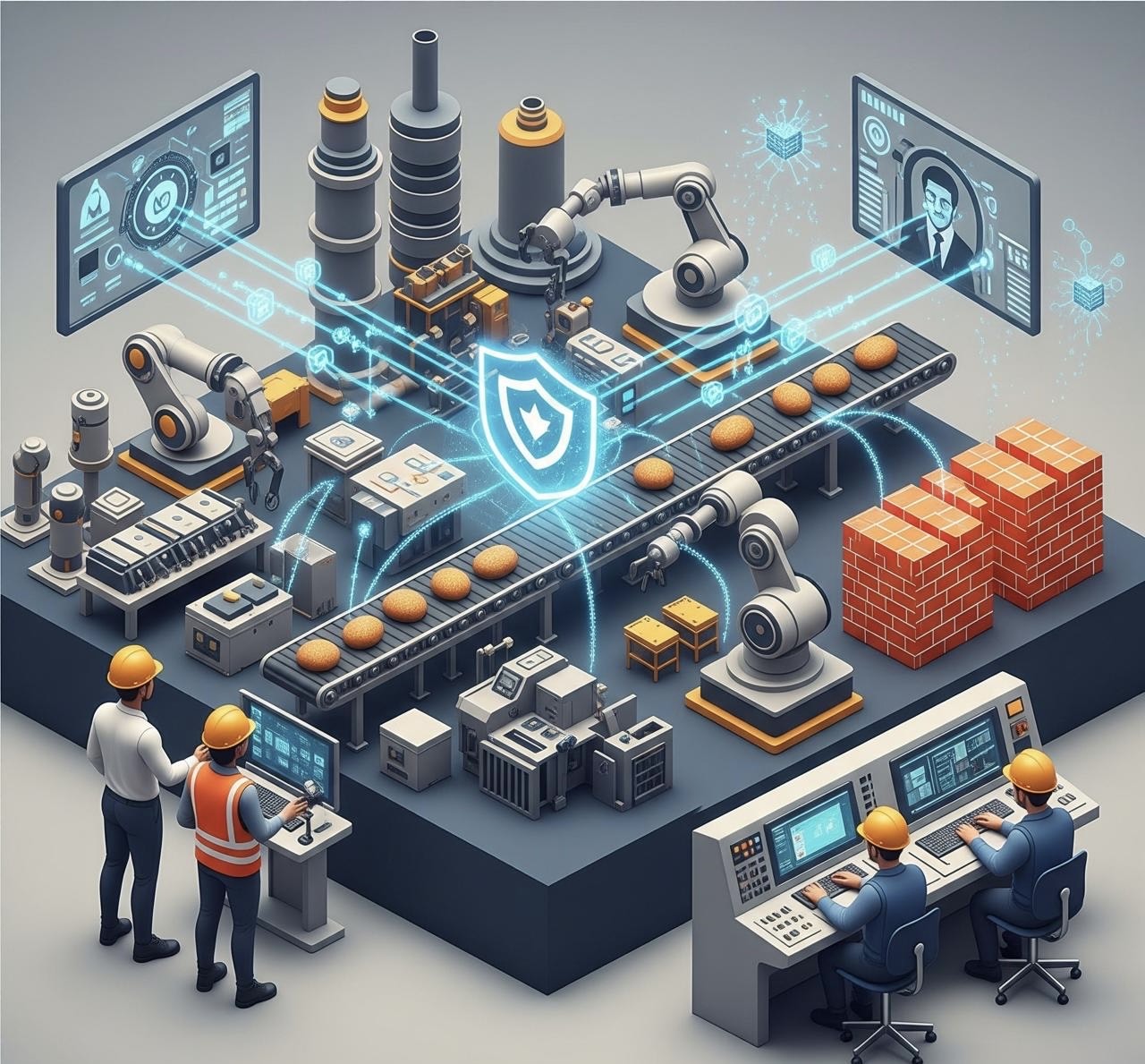
Cybersecurity in Manufacturing
Cybersecurity in Manufacturing: Protecting the Backbone of Industry
By: Destiny Dickerson
Protecting the Backbone of Industry
As the manufacturing sector becomes more digitized, the importance of cybersecurity has never been greater. Modern factories now rely heavily on technologies such as automation, the Internet of Things (IoT), and cloud-based systems. While these innovations improve efficiency and productivity, they also introduce new vulnerabilities that cybercriminals can exploit. As a result, cybersecurity is not just an IT concern—it’s a critical element of operational safety and continuity.
One of the primary reasons cybersecurity is crucial in manufacturing is the widespread adoption of Operational Technology (OT), which encompasses the control systems that manage machines, robotics, and industrial processes. These systems often rely on outdated hardware and software, some of which were never designed with security in mind. Unlike typical office IT systems, OT networks directly interact with physical equipment. If compromised, they can result in production shutdowns, damaged equipment, and even harm to humans.
The Real-World Impact of Cyber Threats
The risks to manufacturers are both varied and serious. Ransomware is one of the most disruptive threats to cybersecurity. In this type of attack, malicious software locks down critical systems, demanding payment to restore access. A notable example was the NotPetya attack in 2017, which crippled the operations of several global companies, including the shipping giant Maersk. Although NotPetya wasn’t explicitly aimed at manufacturers, its effects were deeply felt across the industry.
Another alarming case was the discovery of the Triton malware in 2017, which targeted safety instrumented systems at a petrochemical plant in the Middle East. This malware wasn’t just trying to steal data or extort money—it was capable of turning off safety mechanisms that prevent catastrophic accidents. It highlighted a terrifying possibility: cyberattacks that pose a threat to human life.
Even smaller-scale incidents can be devastating. In 2019, a ransomware attack on a U.S. manufacturing company froze their CNC machines, halting production and resulting in significant financial loss. This kind of disruption demonstrates how a single vulnerability, such as an outdated system or an unsecured device—can affect an entire operation.
Strengthening Security for a Smarter Future
Manufacturers can no longer afford to treat cybersecurity as an afterthought. One of the first steps toward better protection is network segmentation. This means separating the IT and OT environments so that if one is compromised, the other isn’t automatically at risk. Regular software updates and patching are equally important, particularly for legacy systems.
Another key area is employee awareness. Many cyberattacks begin with phishing emails—messages that trick employees into giving away login credentials or downloading malware. When employees are trained to recognize these threats, they become the first line of defense against them.
In addition to these steps, having a clear incident response plan is crucial. A well-practiced strategy for dealing with cyber incidents can reduce downtime and limit damage. More advanced measures, such as adopting a “zero-trust” approach—where no user or device is automatically trusted—are also gaining popularity in the manufacturing sector. These practices assume that threats can come from inside or outside the organization, so every access request must be verified.
Looking ahead, cybersecurity in manufacturing will continue to evolve in tandem with the emergence of new technologies. Artificial intelligence and machine learning will enable the detection of unusual behavior more quickly and accurately. Blockchain could improve supply chain transparency and security. As cyber threats grow more sophisticated, manufacturers that invest in cybersecurity will not only protect themselves but also gain a competitive edge in a market that increasingly values reliability and trust.
In conclusion, the integration of digital tools into manufacturing has created new opportunities—but also new risks. By prioritizing cybersecurity, manufacturers can protect their operations, data, and reputation, ensuring they remain resilient in an unpredictable digital world.
Sources:
- National Institute of Standards and Technology. (2020). Cybersecurity framework for manufacturing. https://www.nist.gov/manufacturing-cybersecurity
- Cybersecurity & Infrastructure Security Agency. (2023). Industrial control systems cybersecurity. https://www.cisa.gov/ics
- IBM Security. (2023). Cost of a data breach report 2023. https://www.ibm.com/security/data-breach
- Krebs, B. (2017, June). The NotPetya ransomware attack. Krebs on Security. https://krebsonsecurity.com/2017/06/notpetya-ransomware-attack